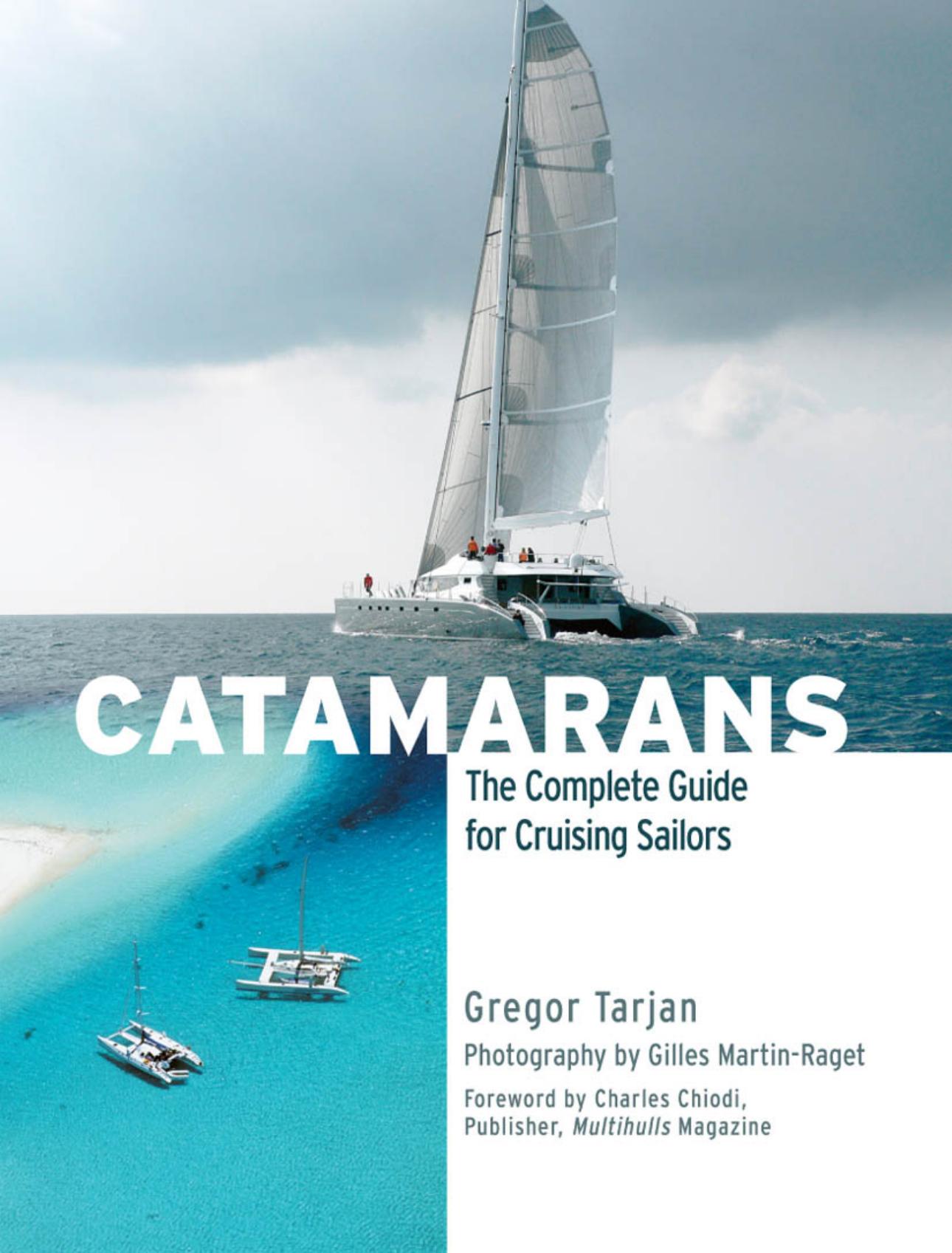Catamarans by Gregor Tarjan

Author:Gregor Tarjan
Language: eng
Format: epub, pdf
Publisher: McGraw-Hill Education
Published: 2018-04-09T04:00:00+00:00
The fractional, or 7/8 rig, is the most commonly used on modern cruising cats. It has the advantage of featuring a shorter forestay as compared to a masthead rig, which allows less luff sag and because it lacks a permanent backstay, also permits fully roached mainsails.
Unlike a monohull, the catamaran’s fractional mast is self-supporting. It is held up by a single or double-diamond stay arrangement and the only function of the shrouds is to keep the mast upright. Shrouds on a monohull often have two functions - they keep the mast in column in addition to preventing it from falling over.
Masts on multihulls are always deck-stepped and are well supported via the heaviest component of the boat’s structure, which is the central crossbeam. Although we have seen that the 7/8 rig will reduce the downward force of the mast, the compression at the mast step can be huge. This force has to be balanced by the tension of the forestay which, in turn, pulls up from the forward crossbeam. It is therefore key to have a stiff forward crossbeam, which still must be able to slightly articulate under a large strain in order to prevent it from breaking. Too often have I seen crossbeams that are laminated to the hulls. They will inevitably crack or be compromised as a result of the tremendous torsional forces in that critical zone. The best way to brace the crossbeam is in the form of a massive pin, flanked by large Delrin washers. Like a tree in a storm, they will allow a slight movement of the forward crossbeam, dissipating the twisting loads of the hulls.
One should briefly note an exception to the popular fractional rig, as used on the hundreds of Prout catamarans, which were popular in the ’70s and ’80s. With a mast stepped more than halfway back, Prouts carried a tiny mainsail and because of that, a very large genoa. The advantage was the small main sail, which could be quickly reefed, as it was only an arm’s length from the cockpit. The large genoa could simply be furled via a roller-furling drum. An added benefit was that the headstay angle was shallower, which exerted less compression on the mast. Some owners even claimed that because of that, the genoa created a component of vertical lift. I hope that this was true for their sake, as these vessels had very little wing clearance, were heavily constructed, and had full-length bridge decks all the way to the bows. Nevertheless, the sail plan seemed to work for that particular design, yet it appears outdated and inefficient by today’s standards.
Download
This site does not store any files on its server. We only index and link to content provided by other sites. Please contact the content providers to delete copyright contents if any and email us, we'll remove relevant links or contents immediately.
The River by Peter Heller(2254)
Breath by James Nestor;(2228)
Sea Survival Handbook by Keith Colwell(2198)
Fatal Storm by Rob Mundle(2171)
Deep by James Nestor(2138)
Lonely Planet Australia by Lonely Planet(2032)
Iced In by Chris Turney(1958)
Discover Australia by Lonely Planet(1903)
Lonely Planet Maldives (Travel Guide) by Planet Lonely & Masters Tom(1797)
One Girl One Dream by Dekker Laura(1637)
Looking for a Ship by John McPhee(1629)
Chicken Soup for the Ocean Lover's Soul by Jack Canfield(1602)
Ten Degrees of Reckoning: The True Story of a Family's Love and the Will to Survive by Hester Rumberg(1599)
Lonely Planet Australia (Travel Guide) by Lonely Planet & Lonely Planet(1551)
South with the Sun by Lynne Cox(1540)
The Wave In Pursuit of the Rogues, Freaks and Giants of the Ocean(1499)
Diver Down by Michael Ange(1469)
Marlinspike Sailor's Arts and Crafts by Barbara Merry(1452)
The Golden Rules: 10 Steps to World-Class Excellence in Your Life and Work by Bob Bowman & Charles Butler(1429)
